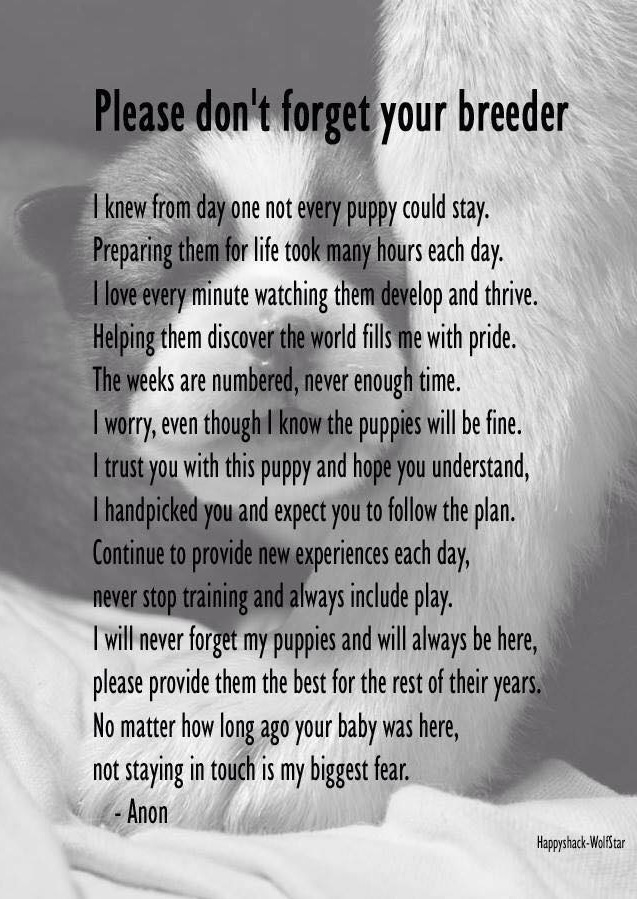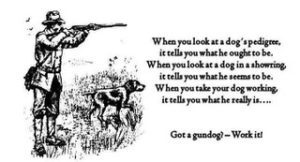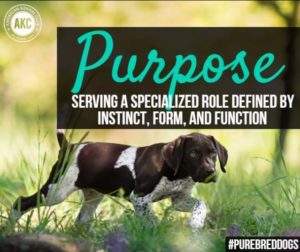https://www.gundogmag.com/editorial/breed-profile-english-cocker-spaniel/176206
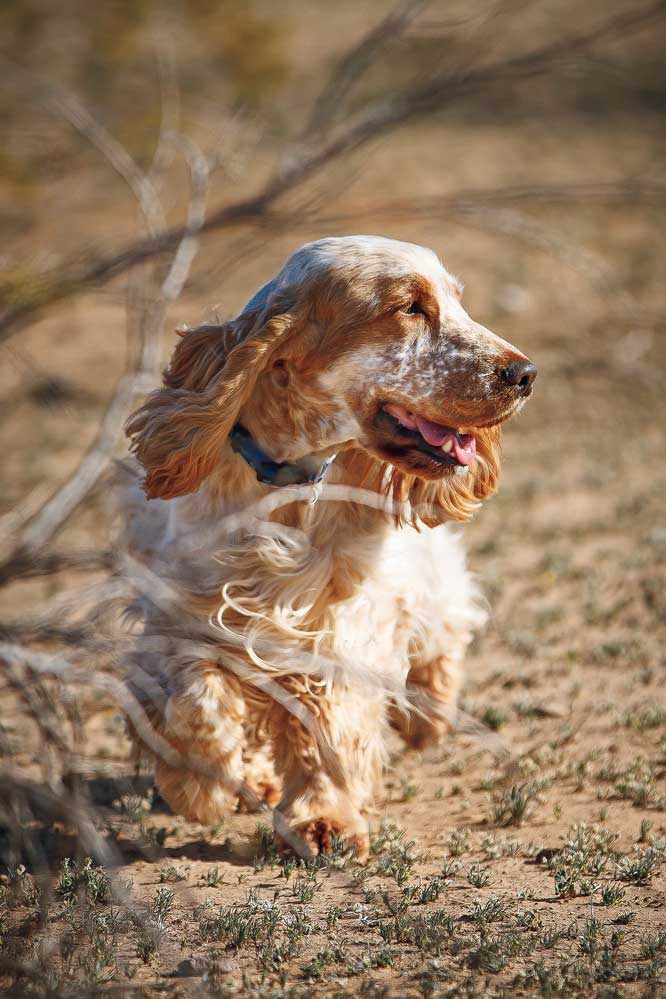
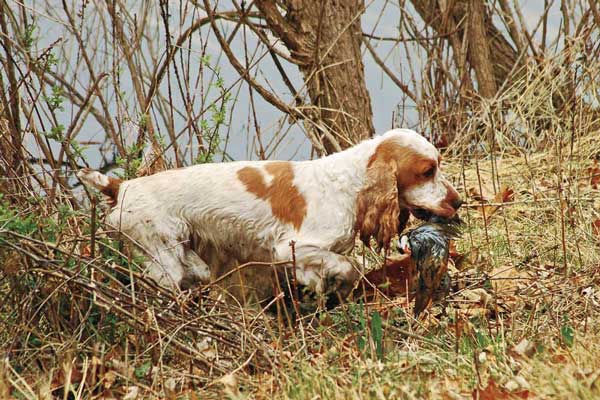
This isn’t the case with the English cocker spaniel, a close cousin. There are even some show champions in this breed that are pretty darned good in the field too. “English cockers are compact, sturdy dogs,” says Dawn Schuster, who owns three conformation champions that also have hunt test titles. “They are also smart and great little problem solvers. They are called ‘merry little hunters’ because their tails never seem to stop.
“Although they work well in open fields, they are best suited for hunting in woods, briars, hedgerows or even in cattails,” Schuster notes. “They can go places where larger dogs have difficulty. They are active, happy little dogs and ideal for hunters that live in a city. They do need to be exercised regularly to keep them happy but that is true of every sporting breed. They’re a close-working dog with moderate speed which makes them a great dog for hunters who enjoy a relaxing day in the field.”
Upland Aficionados
Mary Lou Dunn shares this opinion. “An English cocker is one of the most versatile dogs you could ever want as a hunting partner,” she says. “They shine in the fields or the woods, they will flush and retrieve game and most of them are great water retrievers also.

They are not specialists. They will happily and enthusiastically hunt wherever you want and whatever upland game you want to hunt.
“They cover ground differently than, say, a springer. They hunt objectives where springers have a sweeping quartering pattern. An English cocker can twist through dense cover like a weasel and push birds out of the thickest hedgerows. They excel in the woods, which makes them great grouse and woodcock dogs.”
Although small, the English cocker can perform virtually any job the larger spaniels can except, possibly, retrieve geese. “If an EC is in the correct size range, they are less than 17 inches tall and weigh in the 22- to 38-pound range. For a dog this size, retrieving a wounded goose would be a formidable task indeed,” says Karen Fremuth. “But they are really good on birds in dense cover. They tend to run low and work ground scent along with scent carried on the breeze.
“They will scour cover in sections rather than sweeping through it, although they can be taught to run the sweeping zigzag pattern of a springer. They skirt under and through cover as opposed to the larger spaniel breeds that can power through or over cover.
“Off the field, they are a nice size to live with,” Fremuth adds. “They don’t take up the whole couch or the bed if they’re allowed on either. They are shamelessly affectionate and doting to their owners. They will shadow you around the house and are often underfoot. They love children and are enthusiastic playmates for kids. An EC very much wants to be involved with the family.”
This is not a breed that does well with a lot of repetition in training. “ECs are smart, they think quickly and will bore easily with too much repetition or they will start to anticipate commands,” says Schuster. “They do like to keep their trainer on his or her toes. They are full of personality.
“Originally, they were bred to hunt woodcock in the woods and are ideal for this particular gamebird as well as grouse. They also fare well in open cover, hunting pheasants or chukar and can be trained to sit well in a duck blind.
“In other countries, they are often used to hunt rabbits. But they are a flushing breed, which means if you hunt with one, you have to be ready when the dog shows obvious signs of making game.”
“Generally they are a thinking breed,” Fremuth observes. “They learn fast and can be bored and discouraged by repetition. While ECs have their share of stubbornness, they are more often a ‘soft’ dog that wants to please and takes correction seriously. If they feel they have been wrongly reprimanded or harshly corrected, they will shut down.
“Because of this sensitivity to a wrong or harsh correction, electronic collars are not a good choice for training this breed for any but the most stubborn and over-the-top driven dogs for which all other methods have failed. In other words, with an EC, an electronic collar would be a tool of last resort and then only in the hands of someone truly skilled with that tool.”
Ancient Tails
The oldest of the bird hunting breeds seem to be the spaniels, which have been found in both art and literature for nearly 500 years. Spaniel-type dogs were very popular in England where the breeds were initially designated as land spaniels or water spaniels.
The differentiation present in the modern-day spaniel did not begin until the mid-1800s when the land spaniels became more specialized and divisions among the types were based on the dog’s weight. But all had the job of finding game and flushing it into the air within range of the hunter’s firearms.
The smallest of these spaniel types were designated as “cockers” for their primary use on woodcock, and what eventually became the American and English types were merely considered varieties of the same breed until after WWII. Around that time, a major misfortune happened to the American half of the cocker family. They became extremely popular, over-bred, and the result was nearly the ruination of the breed as a hunting dog.

The English type, less attractive to buyers in the pet market, escaped many of the whims of fashion and has been held closer to the original hunting form and function. But in the last 20 years or so, a gradual split has developed between show and field types in the breed.
“Yes, there is a difference between ‘field-bred’ ECs and ‘show-bred’ dogs,” says Schuster. “But I’ve put senior hunter titles on two of my show champions and a JH on the other.
“Field dogs are not bred to meet the breed standard but rather for soundness, ability and the drive to work,” she continues. “They typically have less coat than dogs from show breeding with a higher ear set and they are a bit longer in body. Their tails are also docked a bit longer. The dogs from show breeding are bred to meet a standard of size, look and build. They have a shorter docked tail and more coat, which requires more grooming time.
“While some of the hunting instinct has been lost in some of the show lines because they haven’t been selectively bred for their field ability, there are some breeders who are committed to maintaining their dogs’ purpose in the field, that do hunt with their dogs and also title them in the field.
“Both the show and field dogs, incidentally, have wonderful, happy personalities that make them ideal family dogs. In general, if I’m going to do hard hunting, I’d choose a field-bred EC. A casual hunter probably would fair better with a dog from show breeding.”
Field vs. Show
“English cockers vary somewhat in their speed and style of work depending upon their lineage — field or show — and their training and experience,” says Fremuth. “Though I’m speaking in generalities here, good working dogs from show lines tend to work at a brisk pace and in a deliberate manner. Some are stylish workers, some are not.
“You have to keep in mind hunting ability is not always a high priority with people who breed for the show ring, which means there is no consistency in ability among the pups in a typical litter from show lines. However, while hunting ability may be inconsistent in dogs from show lines, it is by no means absent.
“Based on my experience testing litters, judging and training, about 20 percent of the dogs from show lines are potentially very good to excellent hunters, the vast majority are quite functional as a hunting dog with some extra training and the final 20 percent or so are of no use at all afield.
“Field-bred dogs naturally tend to a higher degree of speed and power although they also may or may not be stylish in their manner. Dogs from field lines vary greatly in size and appearance and even in coat volume and texture.”
English cockers have escaped the curse of popularity that befell their American relatives, as they currently rank 64th in the American Kennel Club’s registration numbers. But that means finding a pup may require some work.
“I look for a dog that makes and holds eye contact with me and has a clear, honest expression,” says Dunn. “Physically, I want a dog that is well put together with no glaring conformation flaws. In either the show or the field English cocker, crooked legs, lack of angulation, slab-sided or shallow-chested dogs are going to become unsound and spend more time recovering from a hunt than they will spend in the field with you.
“It worries me that some breeders will go to the most successful dogs in the breed with little regard for correct type and temperament. The best place to start looking for an EC is the parent club, the English Cocker Spaniel Club of America, and look at their breeder referrals. Hunt tests and cocker field trials are also a good place to see ECs in action.
“The English cocker community is small and quite tightly-knit and there is some crossover between those with show and field interests. Most of the breeders who are members of the club know who is breeding what and how successful they are at achieving their goals.”


